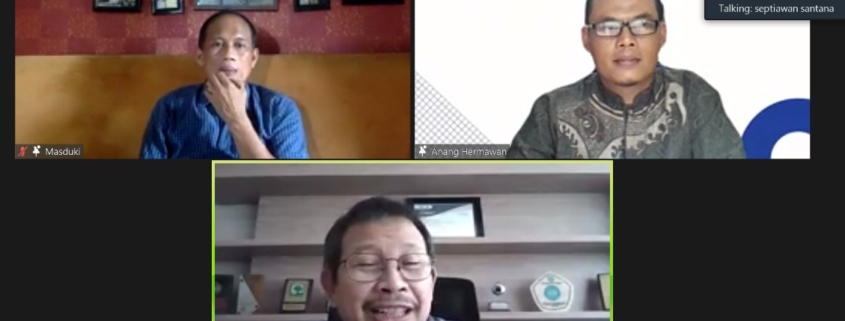The Model of the Three Mandates of Higher Education in Indonesia and the Roadmap for the Department of Communication UII
Some time ago, the team led by Masduki, Universitas Islam Indonesia (UII) Communication Lecturer, Journalism, and Media Regulation research cluster, completed the Road Map or 50 Years Roadmap of UII Communication Science. This Roadmap summarizes various plans and responses to current conditions and future projections. Mainly the response to digitalization, the challenges of disruption, and the humanitarian crisis due to modernization.
Masduki, Doctor of Communications at UII, a specialist in the study of public broadcasting and the political economy of media, said that several things became input or background for the importance of making this 50-year roadmap. Its upstream are three university mandates covering research, teaching, and service. “In the global scope, conflicts of civilization arise, at the Indonesian level there are problems related to the implementation of democracy, then in the context of Islam it is important to discuss the relation between Islam and empowerment,” said Masduki at the seminar presentation session as well as socialization and roadshow of the UII Communication Studies Study Program Roadmap which was held on Friday, December 3, 2021.
This event was hosted by Moderator Anang Hermawan, a doctoral candidate for the communication and empowerment cluster from UII, and invited Speaker Septiawan Santana Kurnia as Dean of FIKOM Unisba. Doctor Septiawan Santana appreciates this roadmap and provides input from the experience of the Communication Faculty of Universitas Islam Bandung (Unisba) over the past almost 30 years. According to him, same as what the Dean of FPCS UII said, it is perfect, and it is time for the Department of Communication at UII to become a Faculty that will undoubtedly increase its reach and access.
The three regions also have the output indicators of these three areas on the practical roadmap. First, indicators in the field of research are the presence of research roadmaps and international research collaborations. This includes conferences and international journal publications. It is also essential to have downstream research.
Second, indicators in teaching are the availability of S1, S2, to S3, post-doctoral levels, to international cooperation. The international collaboration in question is, for example, in the form of a double degree and student lecture mobility. It is also important to accelerate the achievement of students and lecturers. The third is the output indicator in the service field by contributing to applicable adaptive technology, contributions at the level of improving the quality of media and information, regulatory reform, and others.
In turn, in the field of research, the expected outcome or impact of the first 50-year roadmap design is the birth of schools of thought and scientists in the field of communication (prophetic perspective, Indonesian, etc.) as a form of de-westernization. There is a discourse on the emergence of the Kaliurang School, which looks like the Frankfurt School in Germany. The outcome in teaching is that alumni’s progress is increasingly felt at the Indonesian and international levels. At the same time, the work in the field of service is the creation of civil society as a form of communication democracy for the welfare of society.



